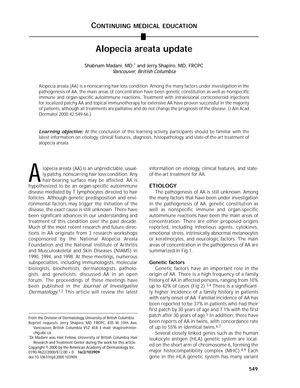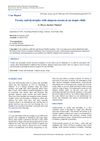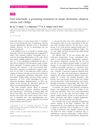Alopecia Areata Update
April 2000
in “
Journal of The American Academy of Dermatology
”

TLDR Despite progress in treatment, the exact cause of Alopecia areata is still unknown.
The document from April 2000 provides a detailed update on Alopecia areata (AA), a nonscarring hair loss condition, discussing its pathogenesis, clinical features, prognosis, differential diagnosis, and treatment options. It highlights the genetic predisposition of AA, with a family history in 10% to 42% of cases and associations with HLA class I and II antigens, suggesting a polygenic disease influenced by genetic and environmental factors. AA is considered an organ-specific autoimmune disease mediated by T lymphocytes, with treatments like intralesional corticosteroid injections and topical immunotherapy being palliative but not altering the disease's prognosis. The document also discusses the efficacy of treatments such as minoxidil, anthralin, and topical immunotherapy with varying response rates and side effects, and acknowledges the psychological impact of AA. It concludes that despite advances in understanding and treating AA, the exact cause remains unknown. The document also includes a comprehensive list of references related to AA, covering genetic, immunological, and treatment aspects of the condition up to the year 2000.


